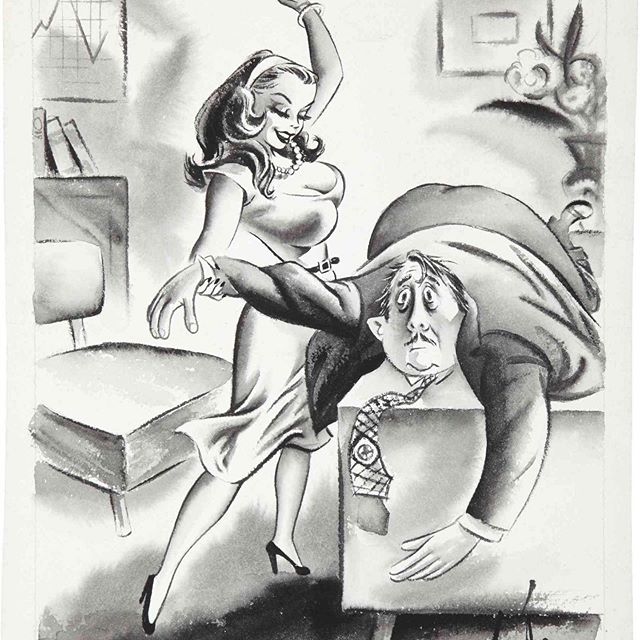A couple of weeks ago, I asked members of my community what they wanted to know about sex. I was giddy to receive an influx of BDSM inquiries.
For the last decade, I’ve been involved in all things kink. I was a professional submissive for Kink University, the education division of Kink.Com.

Artist|unknown
I wrote my thesis on this BDSM porno (and visited the set to watch it get made!). Eventually, I even trained to be a Dominatrix in San Francisco and Los Angeles.
As I began to answer questions, I ran into a bit of a problem.
Kink, like any subculture, has its own etiquette and language. While answering questions, I realized I was using cultural terms that the average person might not know about.
So, before I answer questions like “what’s the average day of a Dominatrix” I thought I’d boil down the six most common things I see in kink-culture.
It’s my goal that this knowledge empowers you and helps you feel welcome in the juicy, leathery world of BDSM.
(1) The Subtle Difference Between a “Scene” and “Playing”
In my experience, the words “scene” and “playing” are almost interchangeable but aren’t necessarily the same thing.
When you engage in a “scene” it usually refers to an elaborate kink session complete with outfits, toys, and a particular fantasy – normally it has a set period of time. Since these fantasies are so immersive, it’s easy to “get lost” in a scene.
Two (or more) people can plan out a scene and engage in some detailed, kinky fun. In fact, it’s even possible for people to rent out a Dungeon and use it themselves.

Artist|Unknown
When you are “playing” it means you are engaging in something kinky. It can be as innocuous as slapping your lover’s ass or as intense as a ravishing fantasy. Kinky people often refer to the act of BDSM as “playing”. It’s normal to hear someone say they are “scheduling a play-date” with a lover or a kinky friend.
Playing does not always mean people are having sex, but it does always mean that something kinky is a-foot.
Lastly, a play partner is a person who is consistently participating in BDSM with you. This person might be a lover or a platonic companion.
BDSM is a practice that can involve sex, but sex isn’t always on the menu.
(2) Negotiation is Non-negotiable
Negotiation is a vital element of BDSM protocol. It is the conversation you have with your play partner before engaging in any type of play.
In my experience, a negotiation happens over coffee or tea. It should not occur in a sexual setting.
The goal of this conversation is to identify if everyone has similar interests and values when it comes to their style of kink. In a negotiation, you’ll want to discuss fantasies, expectations, and boundaries.
If you are in a relationship and planning to introduce BDSM to the bedroom, negotiation is still imperative. This is a new facet of your sex life and it can produce some beautiful vulnerability. However, like an untamed flame, you can also get burned.
Regardless of your level of intimacy, never skip this step in BDSM protocol.
Negotiations are vital to people’s emotional and physical wellbeing. It is how you discover that a lover gets turned on when he’s called fat, but shuts down when he hears the word pig.
It’s when your submissive tells you that they injured their ankle, so no rope play can occur near the foot.
Personally, if someone is trying to bypass this step in a BDSM relationship, I will not play with that person.
(3) Submissive 101
submissive: a person who submits to a Dominant. Also an umbrella term that can refer to a bottom, slave, little, or litol.
The term “submissive” is mainstream at this point. What I’d like to go over is the dynamic between a submissive and their dominant, as well as some popular submissive “roles”.
Despite contrary belief, it is should be a submissive who is in control of the scene not a dominant.
In the negotiation, a dominant and a submissive will discuss and agree on a scene to act out.
Once the scene begins, the submissive will usually relinquish autonomy and obey the dominant for the duration of play.
Meanwhile, the dominant is playing the authoritative role everyone was excited about.

Artist|Unknown
While it’s easy to imagine that the dominant has executive power, it should be a submissive who is fundamentally in control of the scene.
After all, the submissive’s body is receiving most of the sensations.
If a dominant accidentally crossed a boundary, the submissive is 100% in their right to stop the scene, ask for a break, or request a check-in.
Honest mistakes happen, but if a submissive finds their boundaries being manipulated on a regular basis, it might be time to find a new dominant.
Similarly, a dominant should not be treated like they are only there to fulfill someone else’s fantasies.
Rather, a Domme and sub should align because they have similar kinky interests and values.
The four most common types of submission:
- a bottom, the play-partner who follows orders and receives pleasurable sensations during a scene.
- a little, a submissive who is specifically engaging in “age-play”. Where the Dominant is the Adult and the “little” is a little girl, little boy, child, baby girl/boy, or brat.
- litol or lidol, the term “little” in a baby-talk voice.
- a slave, a submissive who gives up complete autonomy to a Master for a select period of time. Some slaves enjoy this form of submission so much that they devote themself to a Master 24/7, however, it is not required to do this to enjoy the slave/Master dynamic.
There are, of course many ways to submit. The identities listed above just happen to be ones I see most often in BDSM culture.
(4) The Most Common Types of Domination
Dominant: an umbrella term that can refer to a Dominatrix, Domme, Daddy, Mommy, or Top.
The Dominant is the person in the scene who has permission to take charge, give orders, and provide physical sensations.

Artist|Unknown
Dominants expect to be obeyed and many have their own specific protocols.
In a negotiation, it’s beneficial to ask a dominant what their “style” of domination is.
I like to think of Dominants as the Chef’s of BDSM.
A submissive will provide all the necessary ingredients during the negotiation.
If the Dominant has overlapping kinks, it’s likely to be a good match.
With the submissive’s consent, the dominant will proceed to cook up a scene for their submissive.
It’s important to recognize that a dominant is gonna devote time to set up the scene and be working up a sweat while they try to please their submissive.
Don’t take that for granted. Likewise, a dominant should appreciate their submissive’s vulnerability and not push them past their boundaries.
Common domination identities are:
- Dominatrix, a feminine dominant.
- Domme, a gender-neutral or masculine dominant.
- Daddy or Mommy, the Dominant of a “little.”
- Top, an umbrella term for a person in a position of Dominance in a kinky, romantic, or sexual relationship. In queer culture, a “top” can refer to the more dominant partner in a sexual relationship but does not always carry a BDSM connotation.
- Master, the Dominant of a slave.
- Pro-Domme/Dominatrix, a professional Dominant for hire.
- D/s, an acronym that refers to Dominance/submission or Domme/sub. Therefore D/s can refer to an experience or a BDSM relationship.

Art By|Carlo-charleno
There are many ways you can dominate someone in BDSM. For the purposes of this article (which is designed for beginners!), I’m focusing on the styles of domination I’ve seen most over the last ten years.
A Quick Tip in Party Protocol: When you are at a kinky gathering and you see a dominant arrive with a submissive, it is impolite to speak to the submissive without asking the dominant’s permission first.
The same applies if you are attending a BDSM workshop. If you’d like to network with a submissive, make sure to ask their dominant first.
(5) Impact Play
Wikipedia has this great definition of impact play:
Impact play is a human sexual practice in which one person (the bottom) is struck (usually repeatedly) by another person (the Top) for the gratification of either or both parties which may or may not be sexual in nature. It is considered a form of BDSM.
When it comes to understanding kink habits and culture, knowing the term “impact play” is a big one.

Artist|Unknown
In a negotiation, it’s common to go over all the types of impact play one prefers. If you don’t know what types of impact play you like, Kinkly has a guide of common toys and play methods used for impact.
However, you don’t need to rush off to a sex shop and buy expensive toys just to practice impact play.
In fact, one of the most universal forms of impact play (spanking) is versatile and free! With some practice, anyone can learn how to spank without losing endurance. Furthermore, there are several ways to Dominate someone without spending a lot of money.
If you are in the market for some toys, I suggest buying from sex shops that exclusively sell BDSM merchandise. That way your materials will be well-made and used by other industry professionals. The Stockroom and Mr. S Leather are good places to start.
Lastly, it’s important to decide on some safe words before engaging in impact play.
While some people like to get creative with their safe word, I think green, yellow, and red are my all-time favorites and not just because Christian Grey made them so mainstream.
Green, Yellow, and Red are a system of escalating safe words.
- Green means “I’m enjoying myself, please keep going.”
- Yellow means “I need a break / I need you to check-in with me.”
- Red means “I need to stop.”
Escalating safewords is a clearer way of “checking-in” than just having one overarching word. They also won’t completely halt a scene unless “red” is uttered, which can be nice.
Some dominants even use them as a way to check-in when they are playing with a new submissive – asking “do you feel green or yellow?” as a way to gauge their bottom’s pain tolerance or endurance capabilities.
(6) What is After Care, and why is it important?
Aftercare is the time you and your partner take after playtime to recover and also to see to each other’s emotional and physical needs.
Certain role plays and kinky acts can be both physically and psychologically exhausting, so this time is great for relaxing, as well as getting ‘back to reality.’
Lelo, a delicious sex toy company, took the words right out of my mouth.

Artist|Unknown
Aftercare is an imperative aspect of BDSM etiquette.
When planning for a scene, always factor in time for aftercare. One couple I know reserves a few hours before Sunday dinner to play. When they are done with BDSM, they cuddle, cook, and eat together.
The only time I wouldn’t expect aftercare is when you are paying to play with a Pro-Domme. In that situation, aftercare isn’t automatically a part of the deal. In any other situation, aftercare should be expected and honored.
During a negotiation go over everyone’s aftercare needs and expectations.
It isn’t enough to just be kink compatible, it’s important to be emotionally compatible too.
Final Thoughts
While I can’t possibly cover every single subject in an article, everything I shared above was all information I wish I’d known when I got started.
If you are a BDSM beginner, I hope these elements of BDSM culture help you feel more welcome in the community.

Artist|Unkown
If you are trying to bring kink to your relationship, then remember that negotiation and aftercare are vital aspects of kink-planning.
I’d also recommend all partners in a relationship try submission and Dominance at least once.
Often a couple might think they already know who should Top and who should bottom, but many people like to switch between both roles. Don’t box yourself in, it’s kink — experiment!
Lastly, I truly believe that BDSM is for everyone. It might feel overwhelming at first, but you’ll get the ropes soon enough…literally.


























Follow US